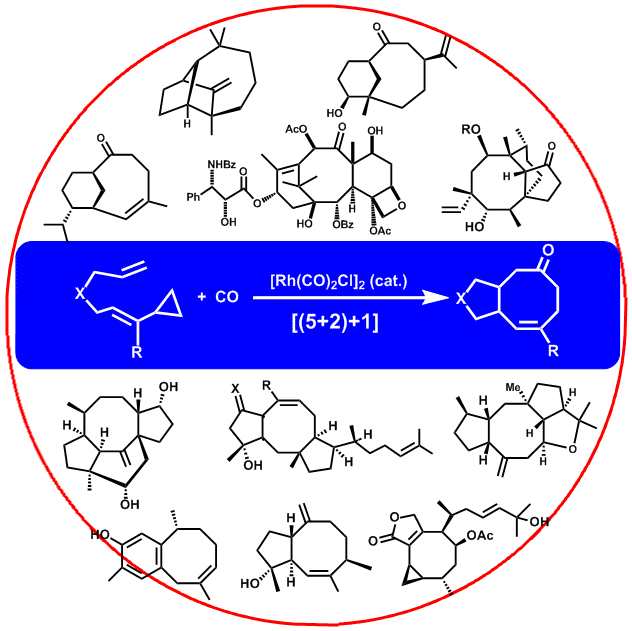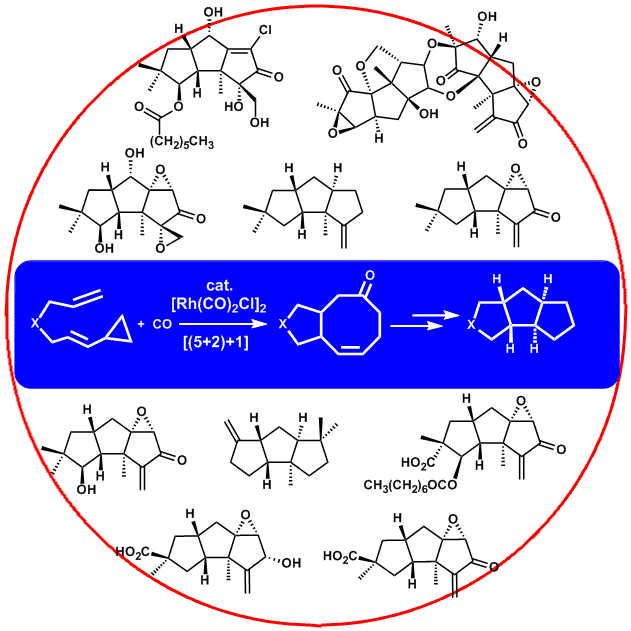
| 主页 | 余志祥教授 | 科研 | 发表论文 | 会议报告 |
| 课题组成员 | 新闻 | 教学 | 化学链接 | English |
科研
| Organic chemistry is one of the cornerstones of today’s science and technology. The three major research areas in organic chemistry includes: 1. Developing theories and understanding reaction mechanisms; 2. Discovering and developing new reactions and catalysts for ideal synthesis; 3. Designing and synthesizing functional molecules to address problems in sciences such as medicine, biology, materials, agriculture, and environment. The Yu group at Peking University is devoted to use both computational chemistry and organic synthesis to advance organic chemistry in the above-mentioned three areas. The students in the Yu group have strong training in both computational chemistry and synthetic organic chemistry. |

Joining Forces of Computation and Organic Synthesis
| 1. Developing theories and understanding reaction mechanisms | |
|
We are interested in knowing how an important or new reaction happens. This knowledge will help us understand a reaction and satisfy our curiosities to nature. On the other hand, in-depth understanding of the reaction mechanisms can help chemists optimize the reaction conditions, and provide guides for the design of new reactions and catalysts. In the studies of reaction mechanisms, we are using either computational chemistry or experimental techniques or both to explore the potential energy surface of a reaction, to see the 3-D structures of reactants, transition states, intermediates and products involved.
|
|
|
|
|
| 2. Discovering and developing new reactions and catalysts for ideal synthesis | |
|
Discovering,
designing and developing new reactions and catalysts are critical for
ideal and green synthesis, which is paramount for advancing today’s
science and technology while improving the quality of life for human
beings. In this research area, our focus is to design and develop new
reactions and catalysts through the joint forces of computational
chemistry and synthetic organic chemistry.
|
|
|
|
|
| 3. Designing and synthesizing functional molecules to address problems in sciences such as medicine, biology, materials, agriculture, and environment. | |
|
We are
passionate to apply the designed and discovered reactions in our
laboratories to address the challenges in total syntheses of natural and
non-natural products. Meanwhile, our eyes are open to natural products
with either significant biological activities or novel skeletons or
both. At the present stage, we are endeavoring to utilize our designed
Rh-catalyzed [(5+2)+1] cycloaddition to synthesize natural products with
medium-sized carbocycles and triquinane skeletons.
|
|
  |
|
|
|
|